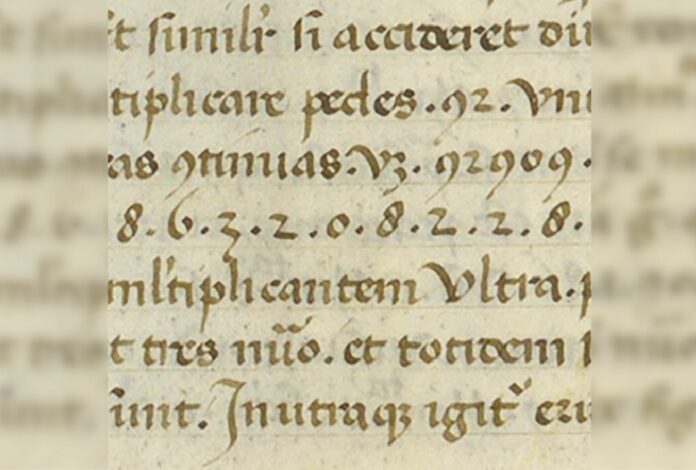The origins of the decimal point, something millions of people use daily, may be much older than we first thought.
It was initially considered to have originated in 1593, having been used by German mathematician Christopher Clavius in his creation of astronomical tables.
Now, however, the decimal point has been discovered to have been used 150 years prior, by a Venetian merchant, according to a new paper in the journal Historia Mathematica.
Historia Mathematica 2024. DOI: 10.1016/j.hm.2024.01.001
According to the paper, a man named Giovanni Bianchini invented a system of decimal fractions in the 1440s, which he used in metrology and spherical astronomy.
“We trace Clavius’ use of decimal fractional numeration and the decimal point back to the work of Giovanni Bianchini (1440s), whose decimal system was a distinguishing feature of his calculations in spherical astronomy and metrology,” the paper reads.
This discovery was made after mathematician studied parts of a manuscript written by Bianchini, and noticed that some of the numbers had dots in the middle of them, just like a modern decimal point.
This implies that decimal points were first used to represent non-whole numbers a century and a half earlier than we first thought.
Bianchini was a merchant who took on an administrative role with the d’Este family, where he managed assets and investments. He also published astronomy texts, plotting planetary motion and predicting when an eclipse would occur. It was in his astronomical texts that the decimal point first appeared.
Van Brummelen theorizes that Clavius likely got the idea to use the decimal point from viewing one of Bianchini’s texts, which is why he never used it again.
“Clavius’s introduction of the decimal point in the curious context of an interpolation column in a Sine table, and the fact that he never used it again, is simply explained: he had access to Bianchini’s Sine table (or to someone who himself had borrowed from Bianchini), and he copied the structure of that table in his own work,” he writes.
Bianchini himself is suggested to have come up with the decimal point as a result of his travels, as he is likely to have passed through the Islamic world multiple times. This is where many math concepts were being developed, and it is possible that this influenced Bianchini to develop a way of representing non-whole numbers.
Do you have a science story to share with Newsweek? Do you have a question about maths and decimal points? Let us know via [email protected].
Uncommon Knowledge
Newsweek is committed to challenging conventional wisdom and finding connections in the search for common ground.
Newsweek is committed to challenging conventional wisdom and finding connections in the search for common ground.


